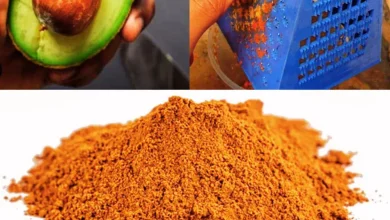Your fingernails indicate that inflammation, organ failure, or even death are all possibilities.

In our daily lives, we often overlook the significance of our fingernails. They’re not just there for aesthetic purposes; they can provide crucial insights into our overall health. In this article, we will explore the various ways your fingernails can serve as indicators of your well-being, potentially detecting illnesses and health issues before they become severe.
Examining Your Fingernails
To start, take a moment to examine your fingernails closely. Hold your hand about a foot away from your face, at eye level, and scrutinize every detail. Here’s what you should look for:
1. Color Variations
Different nail colors can signal different health issues.
- Pink Nails: Generally, pink nails with a slight white “moon” at the base indicate good health.
- Multi-Colored or Dull Nails: If your nails have multiple colors or look dull, this might indicate an underlying health problem.
- Green Nails: Green nails may suggest the presence of bacteria.
- Red Streaks: Red streaks in the nail bed could signal a heart valve infection.
- Blueish Nails: Blueish nails may indicate insufficient blood oxygen levels.
- Dull Nails: Dull nails could point to a vitamin deficiency.
- Terry’s Nails: Dark streaks at the top of the nails are associated with age and congestive heart failure.
- White Nails: White nails could indicate a liver disorder like hepatitis.

2. Nail Thickness
While having strong nails is desirable, excessively thick nails resembling talons may be a sign of underlying health issues. These issues could include lung or fungal infections, thyroid disease, psoriasis, or allergic reactions to medications.
3. Breakage and Splitting
Frequent split or broken nails that peel off in layers may not solely be due to external factors like hand washing or nail polish. They could indicate issues such as folic acid, vitamin C, and protein deficiencies, as well as conditions like psoriasis and chronic malnutrition.
4. Spoon-Shaped Nails
If your nails are soft, curved upward, and can hold water like a spoon, this could signal various underlying issues. Spoon nails are often linked to iron-deficient anemia, heart disease, hyperthyroidism, and hemochromatosis, a liver disorder characterized by excessive iron absorption.
5. Pitted Nails
Dips or holes in your nails could be a sign of trauma or underlying health problems such as connective tissue disorders, psoriasis, alopecia areata (an autoimmune ailment causing hair loss), or zinc deficiency. Pay attention to the pattern; persistent pits may indicate a disease, while temporary pits could be due to environmental factors.
6. Ridge Lines
Ideally, your nails should have flat surfaces with barely noticeable lines. Ridge lines can be indicative of issues like lupus, iron deficiency, and inflammatory arthritis.
7. Brittle, Dry Nails
Dry and brittle nails that break and split easily may be more than just a cosmetic concern. They can be linked to fungal infections, hormone imbalances, and thyroid dysfunction. Treating these underlying issues may take time, but it can significantly improve the health and appearance of your nails.
8. Clubbed Nails
Nails that swell over the nail bed, causing the skin to appear “clubbed,” may indicate underlying health issues, particularly related to the lungs, respiratory problems, IBS, AIDS, or liver illness.
Taking Action for Better Health
In conclusion, your fingernails can provide valuable insights into your overall health. Paying attention to changes in nail color, thickness, breakage, and other characteristics can help you detect potential health issues early. Remember to consult with a healthcare professional if you notice any significant changes in your fingernails. By staying vigilant, you can maintain better health and make informed decisions about your well-being.




